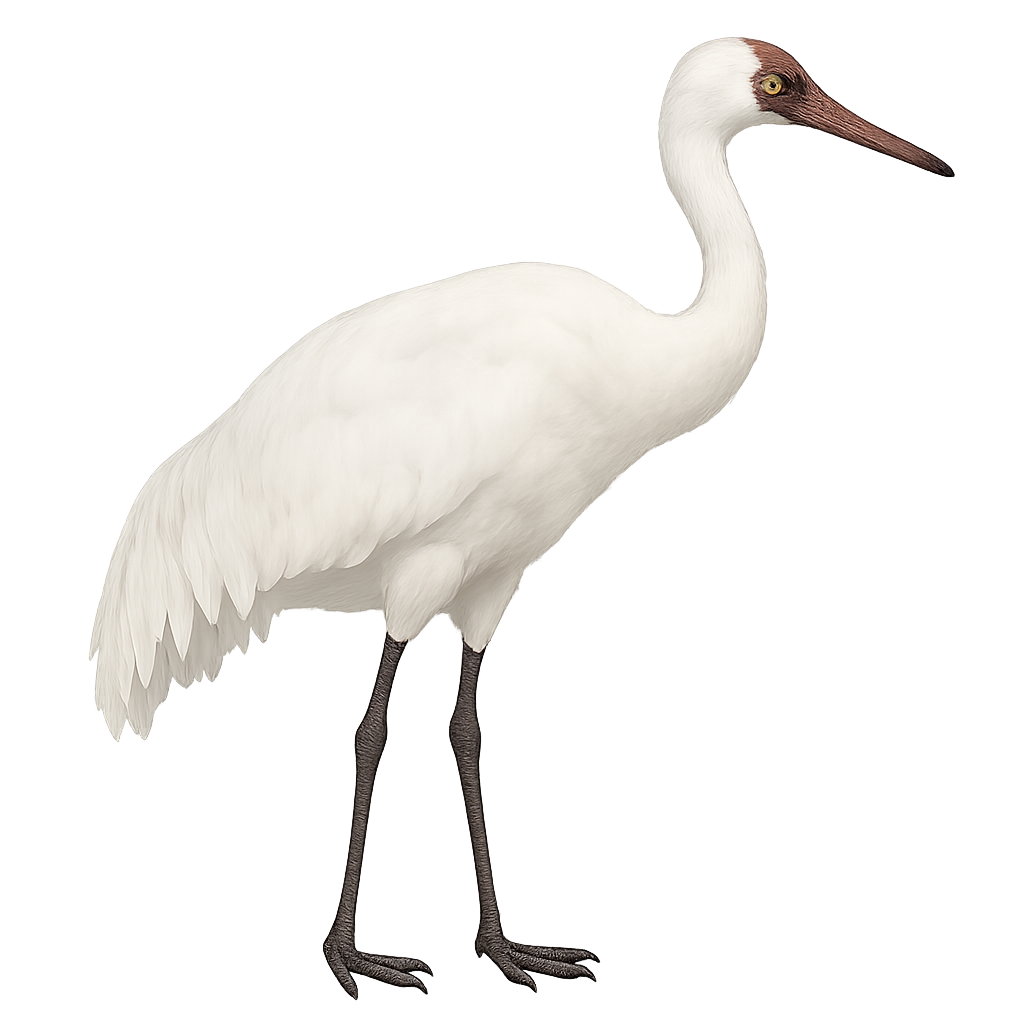Your wildlife photography guide.
Explore the whooping crane in detail, study its behavior, prepare your shots.
Where to observe and photograph the whooping crane in the wild
Learn where and when to spot the whooping crane in the wild, how to identify the species based on distinctive features, and what natural environments it inhabits. The WildlifePhotographer app offers tailored photography tips that reflect the whooping crane’s behavior, helping you capture better wildlife images. Explore the full species profile for key information including description, habitat, active periods, and approach techniques.
Whooping Crane
Scientific name: Grus americana

IUCN Status: Endangered
Family: GRUIDAE
Group: Birds
Sensitivity to human approach: Shy
Minimum approach distance: 50 m
Courtship display: April to May
Incubation: 29-31 jours
Hatchings: May to July
Habitat:
Wetlands, marshes, grasslands
Activity period :
Primarily active during the day, with peak activity in the morning and late afternoon.
Identification and description:
The Whooping Crane, or Grus americana, is a majestic and rare bird known for its large size and striking white plumage. It is characterized by its long legs and slender neck, as well as a distinctive red patch on the top of its head. This migratory bird travels long distances between its breeding grounds in northern Canada and its wintering areas in the southern United States. The Whooping Crane is a symbol of conservation, having been saved from extinction through intensive protection and captive breeding efforts. It primarily inhabits wetlands, where it feeds on small aquatic animals and vegetation.
Recommended lens:
400 mm – adjust based on distance, desired framing (portrait or habitat), and approach conditions.
Photography tips:
To photograph the Whooping Crane, it is essential to maintain a safe distance of at least 50 m to avoid disturbing it. Use a telephoto lens of 400 mm or more to capture detailed images without getting too close. The best photos are often taken early in the morning or late in the afternoon when the light is soft and golden. Be patient and discreet, blending into the environment to observe these birds in their natural habitat. Focus on wetlands where they feed and be ready to capture unique moments of their behavior.
The WildlifePhotographer App is coming soon!
Be the first to explore the best nature spots, track rutting seasons, log your observations, and observe more wildlife.
Already 1 449 wildlife lovers subscribed worldwide

